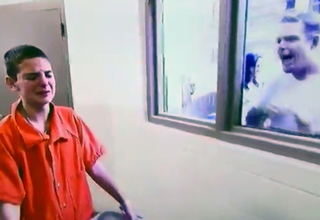Japanese Honor Canadian Pilot After he Kicks their Asses.
________________________________________________________________________________________
Gray takes off for his last flight
At 08:35 a.m. on August 9, Hammy Gray climbed into his aircraft and prepared to lead his flight of seven Corsairs in the attack on Matsushima airfield. At the last minute, Chief Petty Officer Dick Sweet was sent to Hammys waiting aircraft with an urgent message that Matsushima Military Airfield had been heavily bombed earlier and was thought to be out of commission and, if so, he was to seek other targets of opportunity. Hammy led his flight to Matsushima airfield, confirmed the damage and the need to attack other targets such as the Japanese ships he had seen anchored in Onagawa Bay.
Flying from the mainland side at approximately 10,000 feet, Hammy turned his two flights towards Onagawa Bay to avoid anti-aircraft fire. He dove his aircraft in order to get down to sea level for the short bombing run at his chosen target. All Japanese ships in the bay were heavily armed and prepared for an air attack. Additional anti-aircraft positions dotted the surrounding hills creating a killing zone for attacking allied aircraft.
Hammy headed for the largest ship in the harbour, the ocean escort vessel Amakusa that was about the size a small destroyer. As he leveled out for his bombing run, one of his two 500 pound bombs was shot away by a hail of cannon and machine gun fire from Amakusa, Minesweeper 33, the target ship Ohama (a target ship being a gunnery training vessel) and Sub Chaser 42. Hammy released his other bomb and scored a direct hit on Amakusa. This bomb penetrated her engine room instantly killing 40 sailors (including all in the engine room) and triggering an explosion in the ammunition magazine. This massive explosion resulted in the sinking of Amakusa in just minutes. Hammys flight members then recounted seeing his aircraft enveloped in smoke and flame. They reported that his aircraft, at an altitude of only 50 feet, rolled to right into the sea in an explosion of debris and water. The aircraft was never seen again.
After someone keyed their radio mike saying There goes Hammy, his second in command, Sub-Lieutenant MacKinnon, took over as flight leader and launched two more attacks until the two flights exhausted their bombs and cannon ammunition on other targets in the bay. One hundred and fifty-eight Japanese servicemen were killed (71 on Amakusa alone). Most of the warships in the bay were sunk (this includes Ohama), destroyed or badly damaged. Japanese accounts of the battle talk of the valour demonstrated by Commonwealth pilots as they pressed home their attack.
The Victoria Cross
Following this battle, the senior officers under British Admiral Vian met to discuss a suitable honour to recognize the bravery of Lt Gray. Since he had already been Mentioned in Dispatches and had been recommended for a Distinguished Service Cross, it seemed that there was only one suitable award to honour this outstanding leader, pilot and brave Canadian the Victoria Cross, the highest Commonwealth award for gallantry.
The Victoria Cross was created by Queen Victoria during the Crimean war to honour servicemen for the most conspicuous bravery or some daring or pre-eminent act of valour or self-sacrifice or extreme devotion to duty in the presence of the enemy. From 1854 to 1954, there were only 1,345 Crosses awarded, of which 96 have been to Canadians, and only 16 during the Second World War. Lt Grays was the only one awarded to a member of the Royal Canadian Navy or any other Canadian navy pilot and the last to be awarded to a Canadian as the Canadian Government [in the early 1990s] created a Canadian version of the Victoria Cross with the Latin Pro Valore replacing the English For Valour.
In Onagawa Bay, next to a memorial to those Japanese servicemen killed on August 9, 1945, stands the only foreign military memorial on Japanese soil a memorial to Canadas Lt Robert Hampton Gray, which was placed by the Japanese military to honour what they saw as an extreme act of heroism.
___________________________________________________________________________________Source: http://www.airforce.forces.gc.ca/v2/nr-sp/index-eng.asp?id=10020






1 Comments